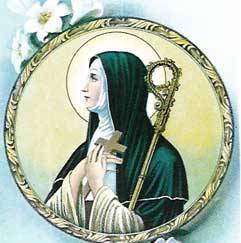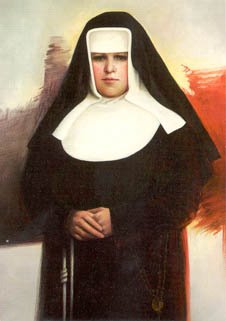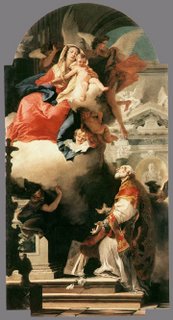
Sweden started out as a Viking nation, which invaded and looted other lands and Nations, returning to their homeland with its collection of stolen treasures.
But it wasn’t until the eleventh century that Christianity would come to Swedish shores. This was also at a time when Finland was co-joined to Sweden who was also having border disputes with its neighbours, Norway and Denmark.
But it was in the year 1302 that a baby girl would be born to a noble family, the parents named her Bridget. Both her parents were overjoyed at the arrival of their beloved child. Bridget's father, Birger owned vast area's of property and her Mother, Ingeborg was related to the Swedish Royal family.
Both parents were very devout, which is just as well for their little Bridget would be the recipient of Divine revelations at a very young age. Unfortunately for Bridget, her Mother would die when she was still in her formative years. So upon Ingeborg's death in 1314, Bridget was sent to stay with her Aunt who helped raised this astonishing young lady.
For Bridget was no ordinary child and began seeing visions when aged only 8 years old, where upon she saw a vision of Our Lady who then placed a crown upon Bridget’s head. This would be followed with visions of Jesus suffering His Passion so that all men could be saved.
These visions would set Bridget’s heart ablaze with a zealous love of our Lord and The Church, and though Bridget longed to serve our Lord by joining a Religious Order, this was not meant to be, at such an impressionable age.
So going against her own wishes she married Ulf Gudmarsson, where upon they had four son's and four daughters, not all of her children though would make it to adulthood. But Bridget was a good mother who raised all her children to love and serve God, and through this sharing of her devout Faith, one of her daughters, Catherine would also be canonised in due course.
Coming from a noble lineage also allowed Bridget to be well read for her times and able to converse with both nobility and beggar alike. For Bridget treated all as if she were conversing with the Lord Himself, and showed no favouritism with a person's social position.
But sadly for Bridget her husband Ulf was suddenly taken ill and he died in 1344. Through his death Bridget felt free to pursue what her heart had been yearning for, to live as a Religious and embrace God through her love of the poor and also her love of prayer.
Thereby she went forward towards founding her own Order which would be called the 'Brigittines'. But in order to obtain recognition for her new Order Bridget travelled to see the reigning Pontiff Pope Urban V in Avignon. Whereby like Catherine of Siena, Bridget also inveigled the Pope to return to Rome and take his rightful position as Supreme Pontiff as was right and proper.
During this waiting time though Bridget also embarked on a pilgrimage to Jerusalem, as she knew it may be her last voyage to this great Land of the Savior’s birth. For Bridget needed to see for herself what had been revealed to her in her many mystical visions of our Lord and Lady.
For at the heart of Bridget lay a great compassion for the sufferings of Christ and the Gift that our Lord extended to this great daughter of the Church. For through her mystical visions, messages and prayers, the suffering of Christ would be revealed to all who would read Bridget’s Divine revelations.
The Pope finally recognised Bridget’s Order in 1370; this brought much joy to Bridget’s heart, as her own health began to fail.
Bridget of Sweden died in 1373.
St Bridget of Sweden was canonised in 1391 by Pope Boniface IX.
I would encourage all to read further on the revelations given to this great Saint including St. Bridget’s fifteen prayers.
Peace of Christ to ALL
Copyright © 2005 Marie Smith. All rights reserved.



